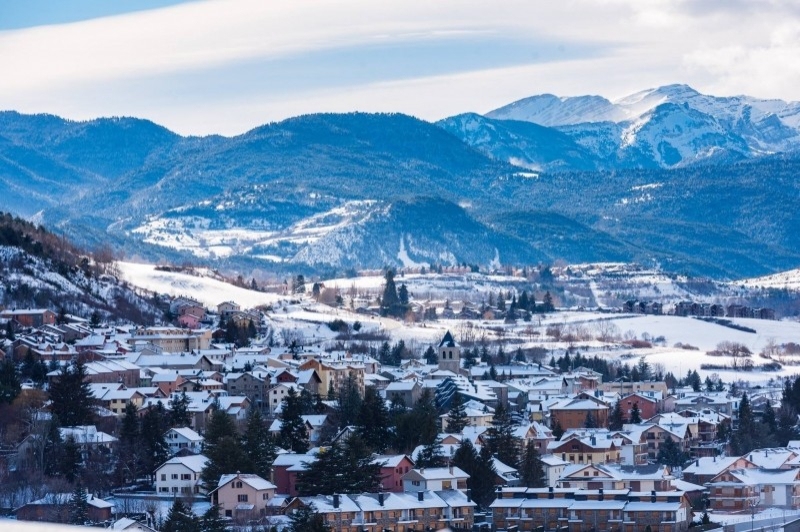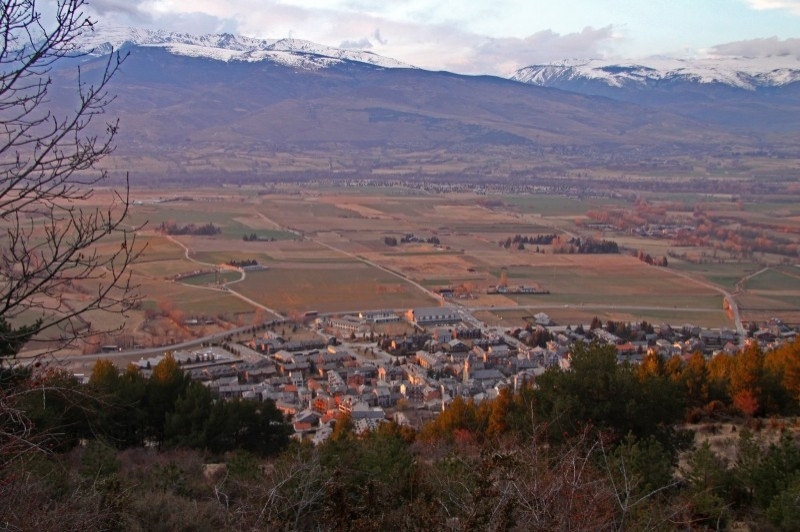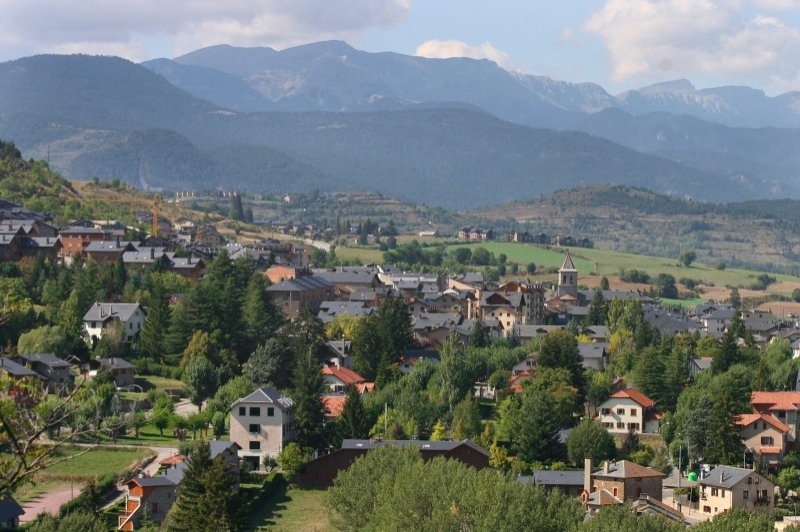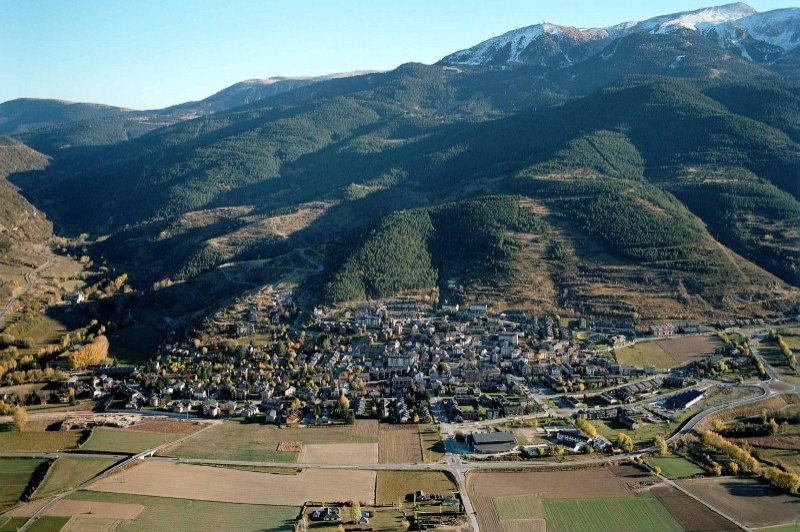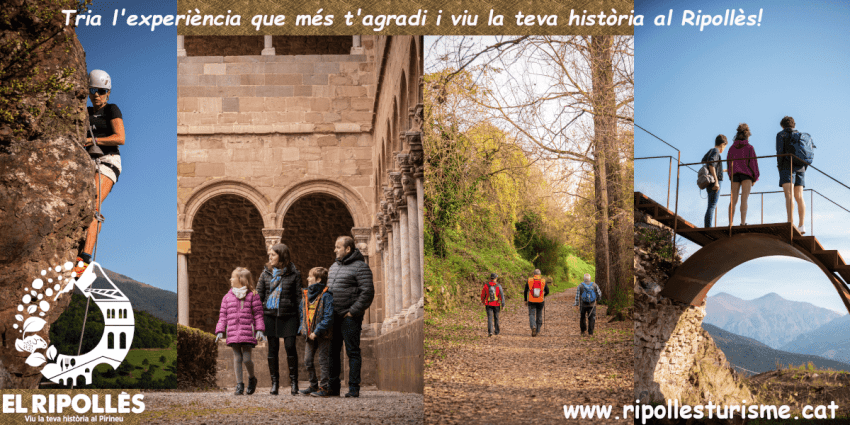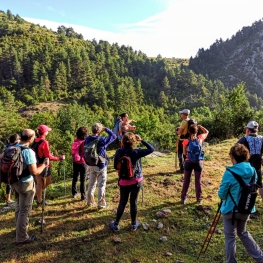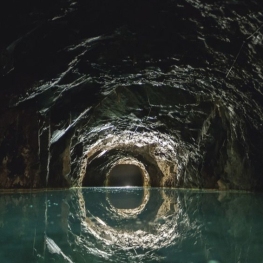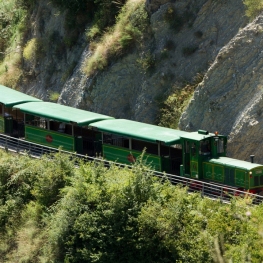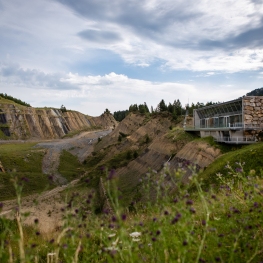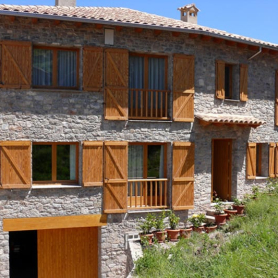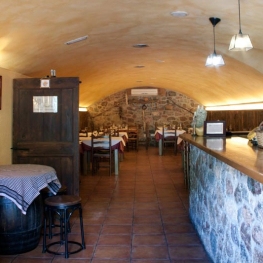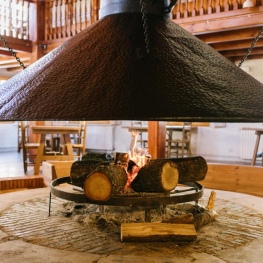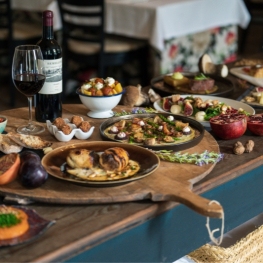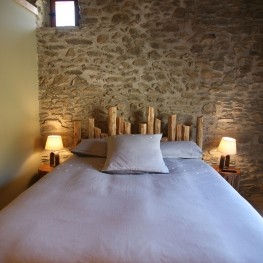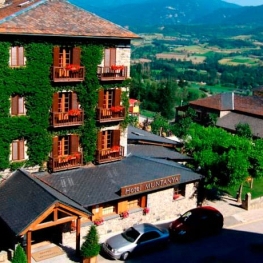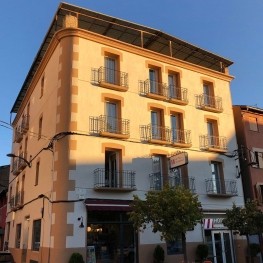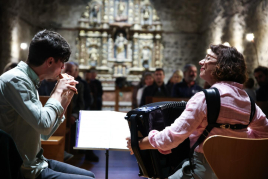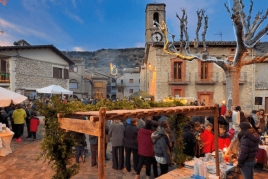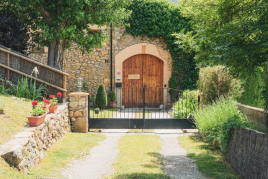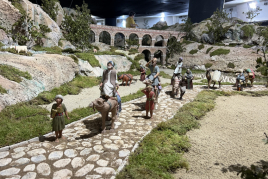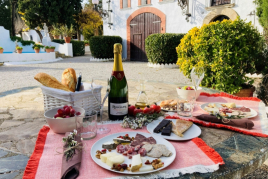Alp
The municipality of Alp enjoys a strategic situation, located in the southern and easternmost part of the Cerdanya region . It has an area of 44.3 km2 that includes from the plain plain to the Collada de Toses and has a complex orography with large areas of forests, alpine terrain, extensive areas of grass and crops,... in short, an incomparable landscape.
The town of Alp is located on the plain, 1,159 m high, at the exit of the valley of the river that bears the same name and the feet of the Tosa. The town, is a picturesque urban nucleus, that counts on the Church of San Pedro of Romanesque origin. On the outskirts is the unique building of the Torre de Río, a fortified farmhouse of medieval origin, which at the end of the 19th century was transformed into a romantic-inspired castle. La Molina and Masella are the other two towns that are located in the municipality, most recently created, following the development of the ski slopes.
Alp is today a living municipality, dedicated almost exclusively to tourism, since within its municipality there are two of the most important winter seasons in Europe: La Molina and Masella that make up one of the most important ski areas in the Pyrenees: Alp2500. Skiing is the essence of this tourist orientation, but there are many sports activities offered by the municipality throughout the year. A network of trails of more than 50 km marked allows us to discover the natural attraction. The municipal term integrates a small part of the Cadí-Moixeró Natural Park and the Cerdanya National Game Reserve.
Apart from its natural and sporting interest, Alp is a culturally active municipality organizing throughout the year numerous activities and events. Gastronomy is one of the values of the municipality, and is found in the large number of excellent restaurants that are located.
Alp's Story
The natural wealth of the place and its strategic location in one of the entry points in Cerdanya, make the term of Alp a space inhabited by man since prehistory.
The dolmen of Paborde is one of the first vestiges of human presence. It is a megalithic sepulcher of the Pyrenean chamber built between 2000 and 1800 BC. C., is located near the neighborhood of the Molina Station.
The parish of Alp is documented for the first time in 863 as a church dedicated to Santa Maria. Later it will always appear under the invocation of San Pedro. We have news that at the beginning of the 12th century San Pedro de Alp welcomed a small community of clergy. The endowments made by the nobles of the time made it one of the richest churches in the region. As for the building, it is a tall medieval church (11th century) with a three-nave basilica structure, characteristic that makes it unique in Cerdanya. Due to the multiple wars that the population has suffered throughout the centuries San Pedro de Alp is today very transformed. Inside, a 14th century Gothic painting stands out with the image of San Cristóbal.
The settlement in the Molina Valley at the end of the first millennium was remarkable. A few kilometers from the Torre de Río we find the remains of the old monastery of Sant Hilari and Sant Esteve de Umfred (or Riudred) linked to the monastery of San Saturnino de Tavèrnoles (Alt Urgell). Currently there are only demolished walls and a fragment of wall worked with opus spicatum. In the valley of La Molina there were also the parishes of San Vicente de Sagramorta, iris de Saltèguet and Santa Maria de Oveja, three nuclei that were abandoned by their inhabitants in the seventeenth century coinciding with a time of demographic decline throughout the Cerdanya.
In the place called Malpàs, just when after the gorge the plane of the Molina opens, we find the Torrassa dated at the end of the 12th century. It is a defensive use construction of square floor with loopholes. Currently, the N-260 road passes through the Torrassa side. The panoramic that is contemplated makes us see how strategic this control point is.
As we have said above, the abundance of natural resources that the term Alp has has been one of the keys to the establishment of people in the territory. The Saltèguet mountain, owned by the City Council of Puigcerdà since the fourteenth century, and the Tosa mountain provided wood, firewood, charcoal, game, pastures and fertile land in abundance, a resource that has been used since prehistoric times to date. The name of La Molina comes precisely from an old wooden sawmill. Although we do not know the exact location of this industry, it should be located near the forests where wood was extracted and on the edge of a torrent to use the force of water to saw the large logs and transport them.
If we talk about heritage we can not finish this review without mentioning the Torre de Río, one of the great properties of Cerdanya. The farm has its origin in a fortified farmhouse documented already in medieval times. The house has attached a chapel where until the Civil War the image of the Virgin of Sheep, patron of the shepherds was venerated . At the end of the 19th century it was transformed by its owners into the castle of romantic inspiration that we can contemplate today.
At the beginning of the 20th century, but especially with the arrival of the railroad in 1922, a new economic activity began to grow and consolidate: tourism and winter sports. Although these activities have greatly changed the physiognomy of the municipality, the historical heritage reminds us how the inhabitants of these places lived in the past.
Nearby routes
See all routes »What to do
Penyes Altes Outdoor Services
Bellver de Cerdanya (a 7.9 Km)Discover new places and new adventures with the help of our team…
Mina de petroli dels "Francesos" de Riutort
Guardiola de Berguedà (a 13.9 Km)Located within the perimeter of the Cadí-Moixeró Natural Park, it is one…
Tren del Ciment
La Pobla de Lillet (a 15.1 Km)Travel with the Tren del Ciment in a unique place where you…
Centre d'interpretació Dinosaures Fumanya
Cercs (a 23.1 Km)Discover the Fumanya Dinosaurs Interpretation Center and travel to the past in…
Where to eat
Hostal la Muntanya
Castellar de n'Hug (a 14.8 Km)Family hostel located in Castellar de n'Hug. It offers various accommodation options,…
El Recó de l'Avi
Guardiola de Berguedà (a 15.6 Km)Typical homemade cuisine, with oak-grilled meats, a wide variety of tapas and…
Restaurant Apartaments Els Roures
Castellar del Riu (a 29.8 Km)Rest, charm and good cuisine, a unique space located in Berguedà, at…
La Santa Restaurant
Ribes de Freser (a 24 Km)Our fires cook locally sourced food, harvested using traditional methods. We support…
Where to sleep
Vilamaroto
Meranges (a 11.4 Km)House from 1850 rehabilitated. We have preserved many architectural and vital elements…
Cerdanya Viva Ecoestades
Prullans (a 12.3 Km)You imagine a place with paradisiacal views, to be able to choose…
Hostal la Muntanya
Castellar de n'Hug (a 14.8 Km)Family hostel located in Castellar de n'Hug. It offers various accommodation options,…
Hotel Terminus
Puigcerdà (a 6.9 Km)A Bed & Breakfast hotel recently renovated, and decorated in a modern…
Events
Experiences
Path from the Bons Homes of Peguera to the Queralt Sanctuary
Penyes Altes Outdoor Services (Bellver de Cerdanya) (a 7.9 Km)
Rural accommodation in Cerdanya for groups in November
Penyes Altes Outdoor Services (Bellver de Cerdanya) (a 7.9 Km)

